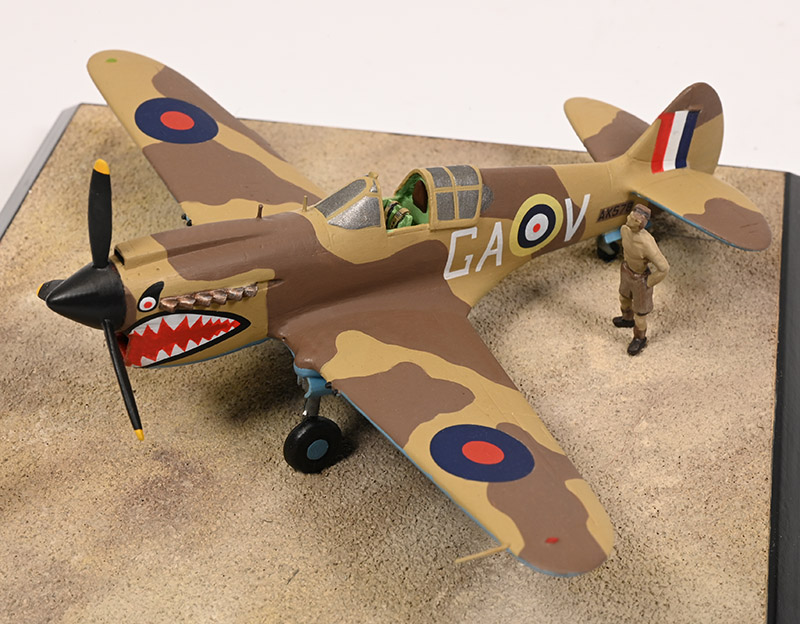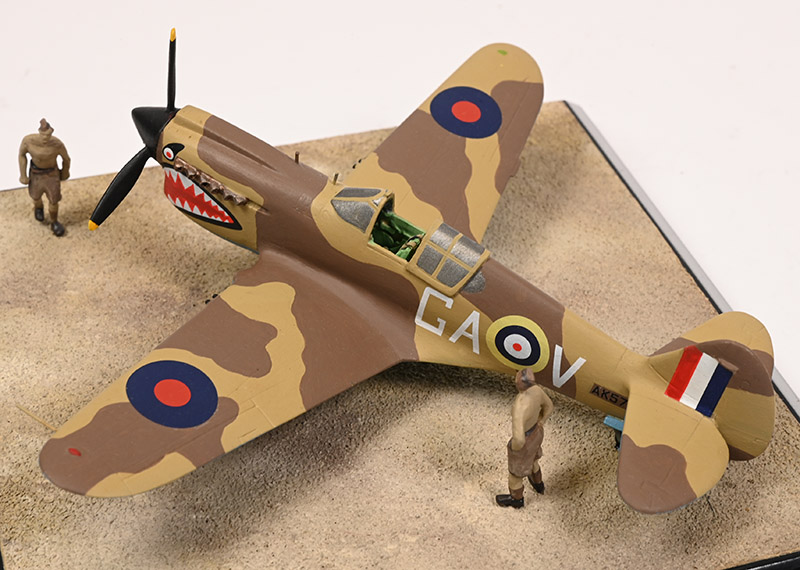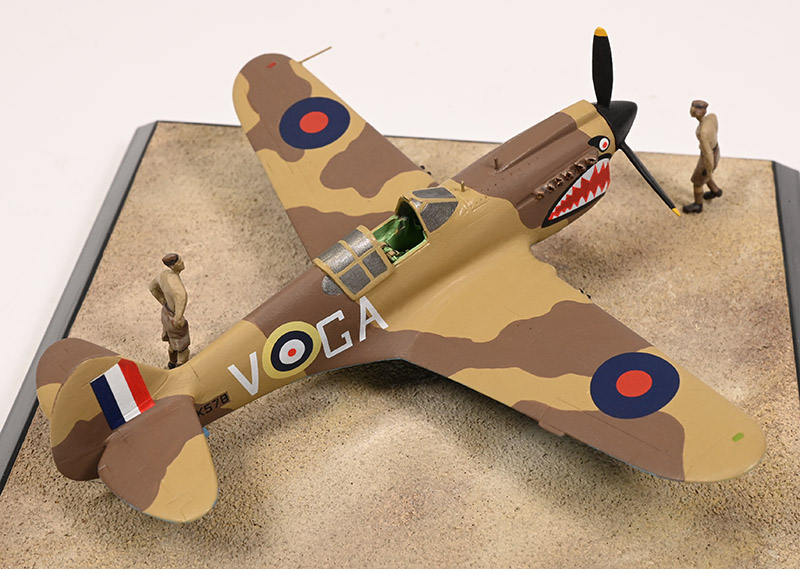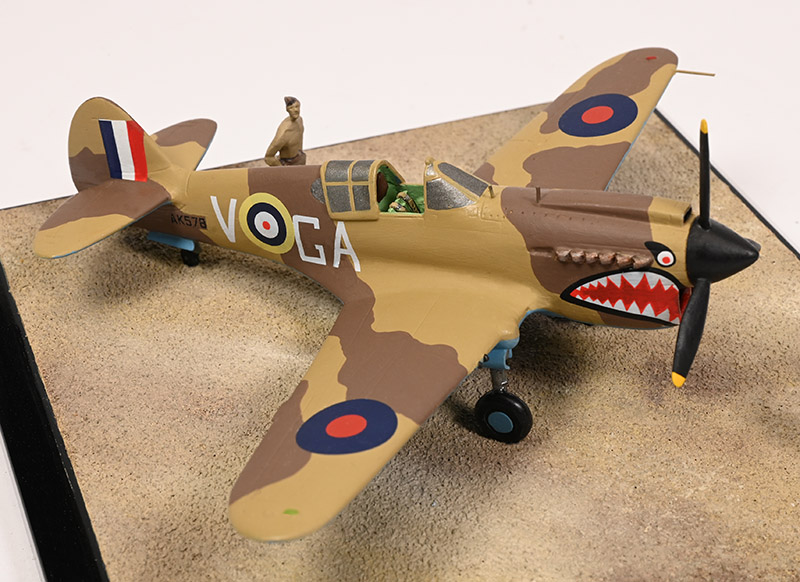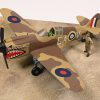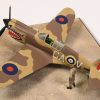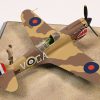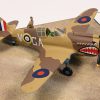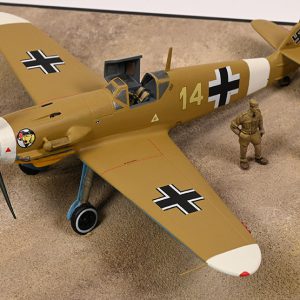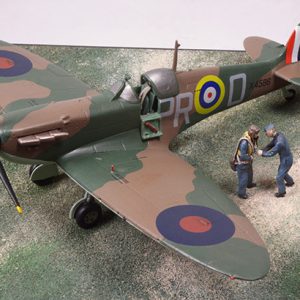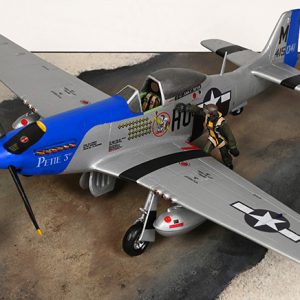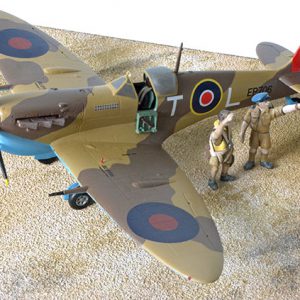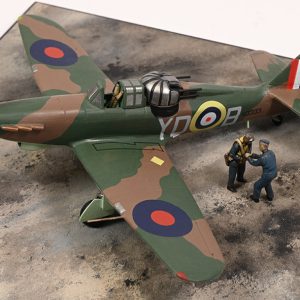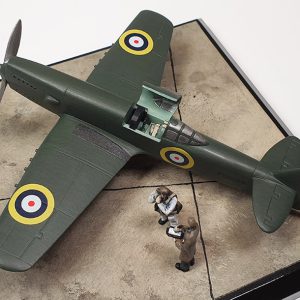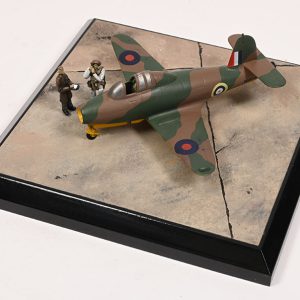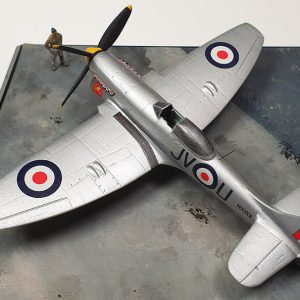Curtiss P-40D Kittyhawk Mk I, AK578, GA-V
112th Squadron, Flight Officer Neville Duke, Egypt, 1942
The Curtiss P-40 was developed as an inline-engined version of the Curtiss Hawk 75/P-36 fighter of the late 1930s. The P-40 D/E variant was a cantilevered, low wing, all metal semi-monocoque design with fabric covered control surfaces. It featured a three-spar tapered wing with rounded wingtips. The wing was equipped with conventional ailerons and split flaps. Only a small number of P-40 D or Kittyhawk Mk Is were made. Fewer than 50. With a new, larger Allison engine, slightly narrower fuselage, redesigned canopy, and improved cockpit, the P-40 D eliminated the nose-mounted .50 in (12.7 mm) guns and instead had a pair of .50 in (12.7 mm) guns in each wing. The distinctive chin airscoup grew larger so they could adequately cool the larger Allison engine.
Comparisons between the Allison V-1710 and the Rolls-Royce Merlin engine “families” are inevitable. What can be said for the Allison is that it made more power at less boost, with a longer time between overhauls, and with a parts-count that was nearly half that of the Merlin engine, which greatly facilitated mass production. There was also a high degree of commonality of parts throughout the series. The individual parts of the Allison series were produced to a high degree of standardisation and reliability, using the best technology available at the time. Even after the war, racing Merlins used Allison connecting rods.
P-40s first saw combat with the British Commonwealth squadrons of the Desert Air Force in the Middle East and North African campaigns, during June 1941. 112 Squadron was among the first to operate P-40 B/C Tomahawks in North Africa and the unit was the first Allied military aviation unit to feature the “shark mouth” logo, copying a similar motif on some Luftwaffe Messerschmitt Bf 110 twin-engine fighters. Such was their need in 1940 that the British ordered the new Curtiss P-40 D/E design off the drawing board in May 1940. In RAF service the fighter received the name Kittyhawk Mk I and Mk IA. 560 aircraft were built for the RAF and delivered between August and December 1941. Kittyhawk’s with serial numbers AK571 – AK591, were four gun variants based on the P-40D (Mk I). In contrast the remainder of the British purchase of 560 aircraft were based on the six gun Model P-40 E (Mk IA).
112 Squadron flew Kittyhawk Mk I’s and IA’s between December 1941 and October 1942, flying mostly bomber escort missions, but also some fighter bomber missions of its own against enemy armour. They flew from many different bases in Egypt and Libya throughout this time in support of the famous Eighth Army. Kittyhawk Mk I AK578, coded GA-V, was a four gun P-40 D variant that served with 112 Squadron in Egypt during 1942. AK578 was the regular mount of Flight Officer Neville Duke during the first months of the year. On the 14th February he shared in 112 Squadron’s achievements when the unit enjoyed considerable success near Tobruk. Duke sent an Italian Macchi C.200 crashing into the ground and shared in the destruction of a second Regia Aeronautica machine. These were his final claims flying the Curtiss fighter. AK578 saw further action with 4 and 5 Squadrons SAAF before going on to No.73 OTU. It was listed as missing during a training flight with this unit in March 1944.
Kittyhawks were delivered to the Desert Air Force in the usual Dark Green/Dark Earth over Sky finish and, so, had to be repainted in the desert camouflage of Dark Earth/Mid Stone and Azure Blue. As is the case for AK578, quite often a rectangle of the original green and earth was simply left around the serial numbers to avoid the necessity of repainting them.


